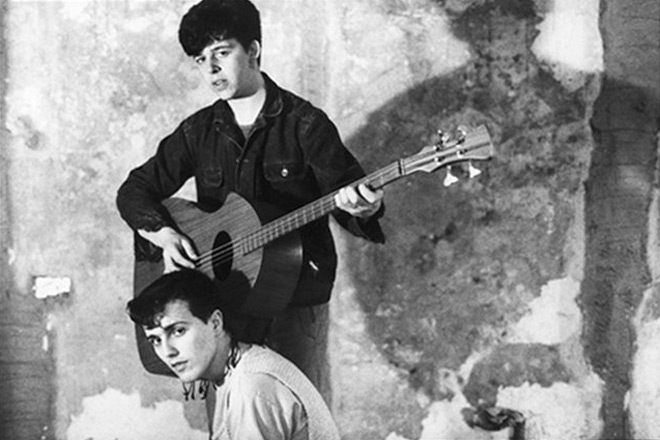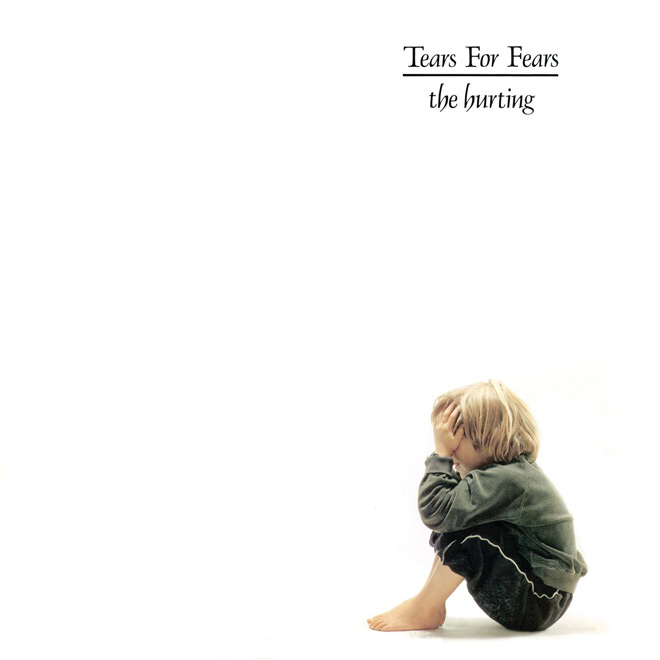
Formed in 1981, in Bath, England, Tears for Fears became one of the forerunners of Pop New Wave in the vibrant and flamboyant 1980s. Amid the waning of their sheen and a falling out in the ensuing decade that prompted Smith’s leaving the band, Orzabal soldiered on and released a couple albums more under the Tears for Fears moniker—in particular, 1993’s Elemental and 1995’s Raoul and the Kings of Spain—until he finally pursued a solo path, like Smith before him. Fortunately, in 2000, the two got together and decided to mend the past and begin work on a comeback album – 2004’s Everybody Loves a Happy Ending.
To this day, the revitalized Tears for Fears remain active and relevant, gigging and writing new songs. And since that their firstborn – The Hurting – is celebrating its 35th anniversary, let them rule your world once again. Spin the record and rediscover what made the tandem of Orzabal and Smith so significant, formidable, and influential and their music compelling and exciting.
Released on March 7, 1983, The Hurting opened with the cool but imposing rhythm yet subtly Gothic temperament of the title track. That early, Tears for Fears’ penchant for progressive song structures was already showing. Followed next was one of the dance-floor favorites from the band’s catalog – the international hit single “Mad World,” which would surely conjure in the mind of the initiated the image of Orzabal dancing the so-called waving hands in the air dance routine. In the ensuing acoustic-guitar-flavored and soulful swagger of “Pale Shelter,” Smith’s strikingly thin and silky, floating voice gave the album an apt antithesis to Orzabal’s imposing vocal presence. The moon to the sun, the ripple to the splash, the warmth to the ice…the sweet paradox of Smith and Orzabal.
One of the less commercial but definitely among the sonic strengths of The Hurting came in the form of the initially practically piano, voice, and percussion combo track “Ideas as Opiates” – eerie, minimalist, psychedelic, but also revolutionary with its short freeform, jazzy mid-song saxophone interlude and coda. The sinister vibes refracted into the ensuing “Memories Fade,” which continued the band’s syncopated, horn-adorned Jazz preoccupation and which slowly transitioned into its Synthpop excursion. Whether one acknowledges it or not, this track was one of Tears for Fears’ early displays of its inclination to what may be described as Progressive Pop.
The energy rose to upbeat level with “Suffer the Children,” as the synth, the anthemic guitar ad-lib, the big drum sound, and Orzabal’s velvety voice slowly soared to stellar heights, also surging with an undercurrent of Gothic sensibilities. The same Gothic mood carried on through the ominous aural and lyrical slant of “Watch Me Bleed,” whose angular rhythm guitar connected Tears for Fears with its Post-Punk roots, making the band a legitimate part of the genre despite its Pop direction.
Tears for Fears’ fourth single, “Change” stood out from the rest of the album for its being Pop-oriented and yet unconventional at the same time with regard to its instrumentation—the xylophone as the lead instrument, augmented with jangly guitar plucks, choppy guitar strums, rolling bass part, cyclical keyboard melodies, and undulating synthbass line. New Wave at its best!
The penultimate track, “The Prisoner” was the album’s Gothic Rock stomper – a cacophony of sharp and edgy sounds, ethereal choral backing voices, and spacey synthesizer flourishes.
Finally, Tears for Fears finished off their debut masterpiece with the seeming balladry of the portentous “Start of the Breakdown” – a final illustration of the album’s overall theme of Psychoanalysis and Primal Therapy, which the band had been able to translate to musical terms successfully.
Thirty-seven years have passed, and yet the Tears for Fears story is still unfolding. They have just released a greatest-hits collection last year, stirring their fanbase and prepping anyone who is awaiting their collection of new materials planned for release before 2018 ends. A bright saturnine and martial sun is indeed rising in the foreseeable horizon. No one is lunatic, after all. And while the excitement is building up, you must have experienced again the pure and pristine beauty of Tears for Fears’ humble beginning.
Surely your travel back in time with the 35-year-old The Hurting was worthwhile with all those familiar tunes, familiar places, and familiar faces. Only the jaded and the worn-out breaks down and becomes mad in this world. Everybody utters a smile in the end. A happy ending, indeed. No more hurting. Only memories…half-faded, half-remembered. No more tears, no more fears. Tears for Fears is now just a band…that made and continues to make great music.






No comment